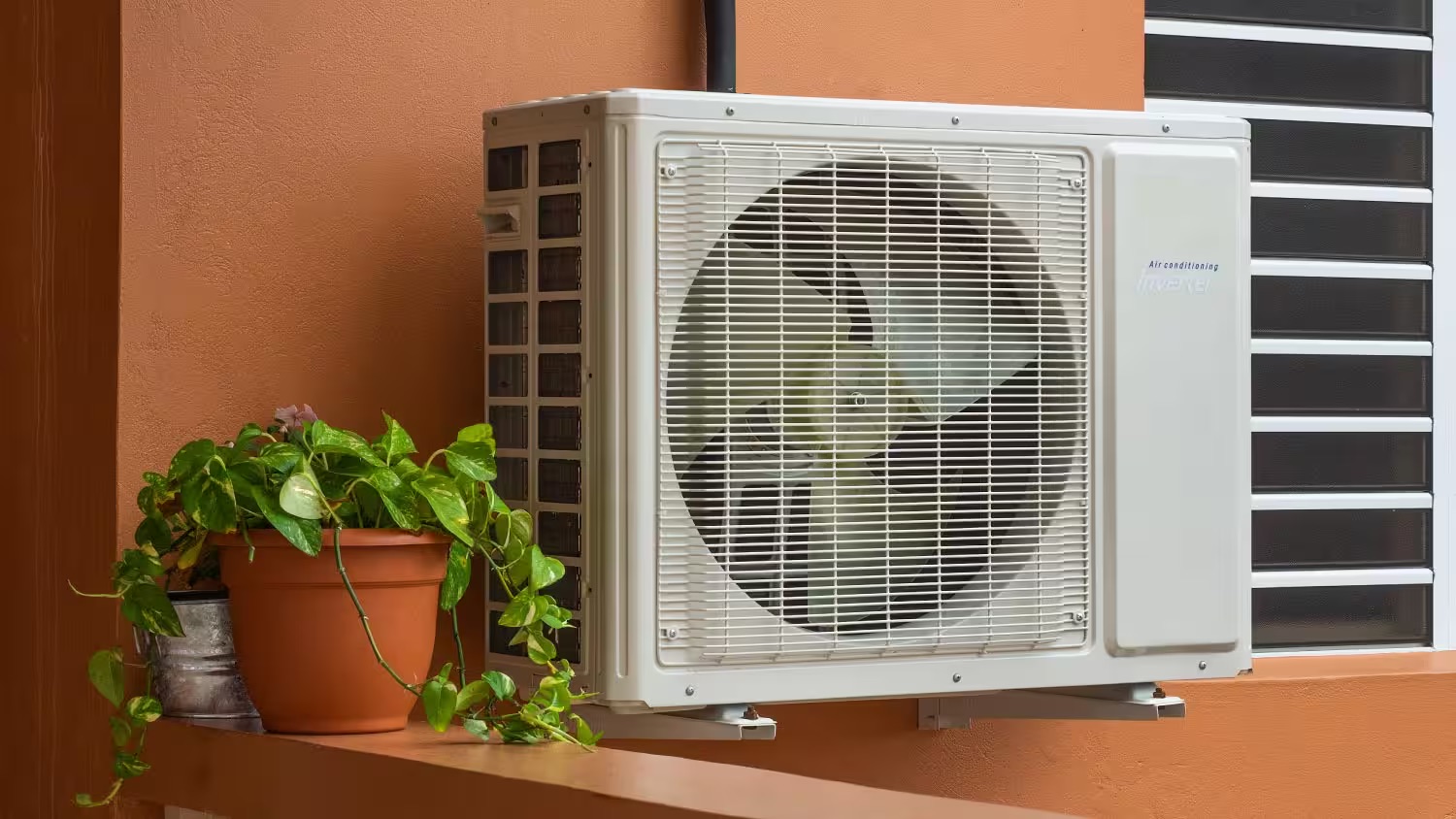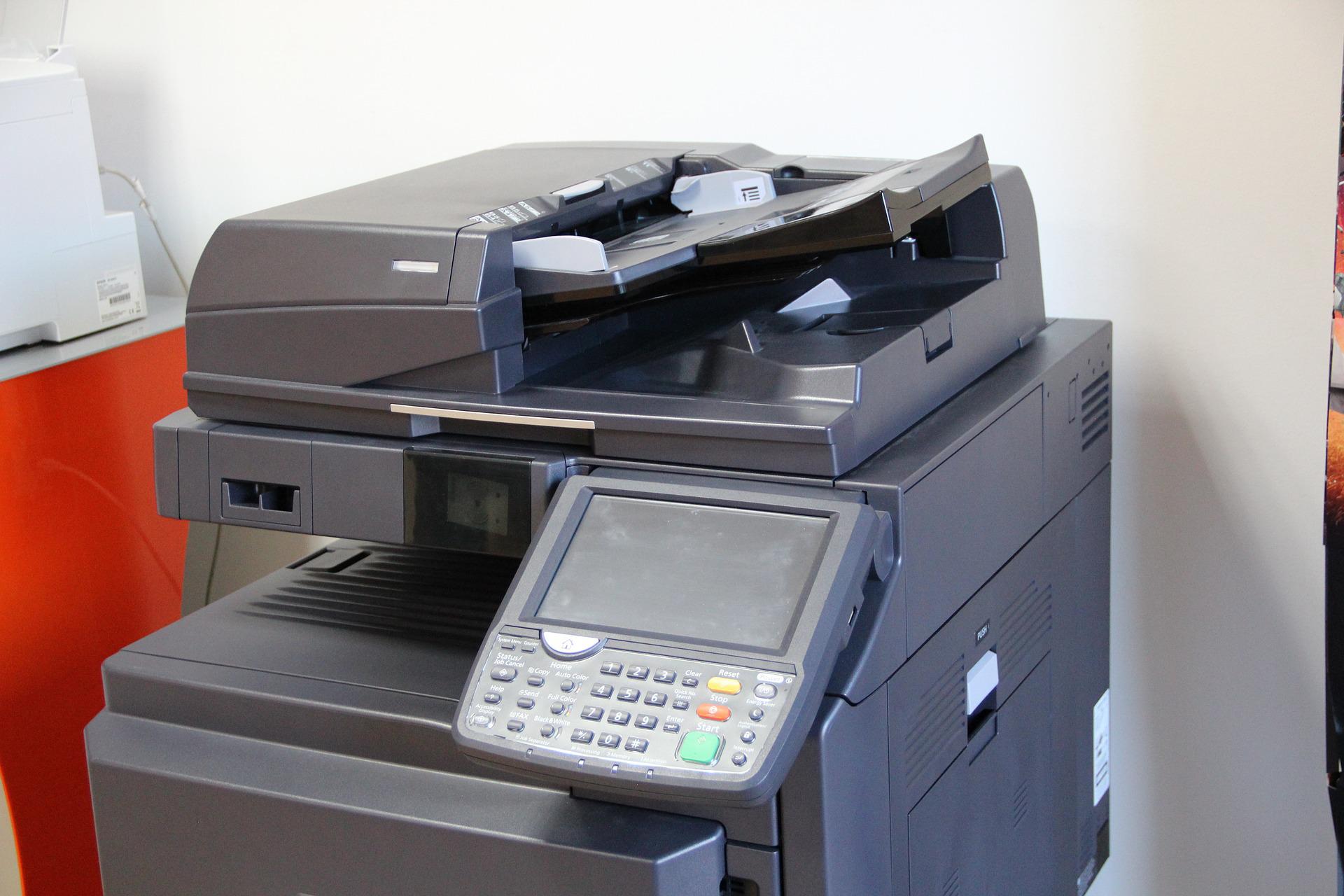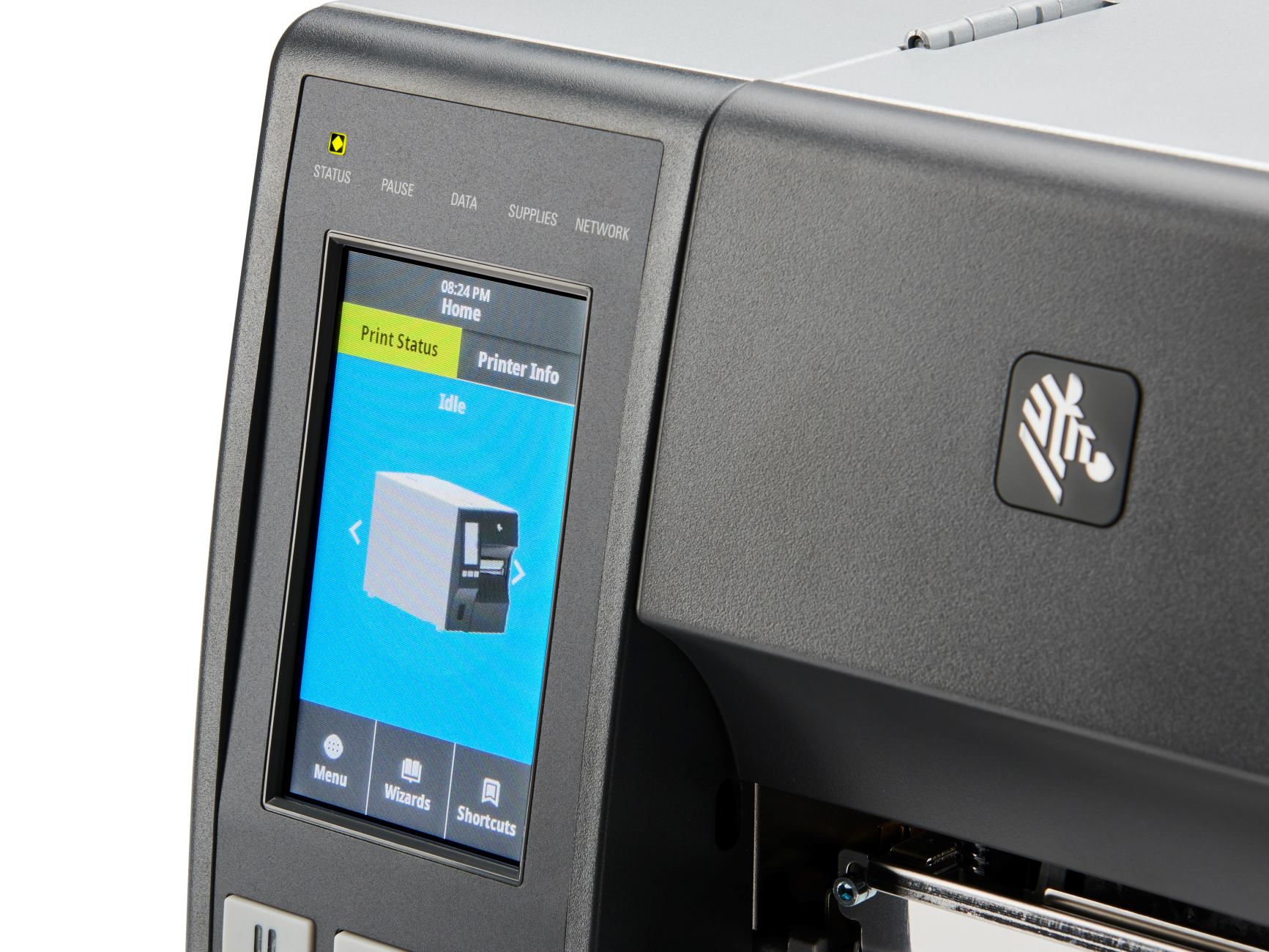Home>Technology>Smart Home Devices>What Is Printer Duty Cycle


Smart Home Devices
What Is Printer Duty Cycle
Published: January 21, 2024
Learn about the printer duty cycle and how it impacts the performance and longevity of smart home devices. Understand the importance of duty cycle in choosing the right printer for your smart home setup.
(Many of the links in this article redirect to a specific reviewed product. Your purchase of these products through affiliate links helps to generate commission for Storables.com, at no extra cost. Learn more)
**
Introduction
**
Welcome to the world of smart home devices, where innovation and convenience intersect to transform the way we live. As technology continues to advance, smart home devices have become integral components of modern living, offering unparalleled convenience, security, and efficiency. Among these cutting-edge devices, smart thermostats stand out as essential tools for managing home comfort and energy consumption.
In this comprehensive guide, we will delve into the realm of smart thermostats, exploring their functionality, benefits, and the factors to consider when choosing the right one for your home. Whether you're a tech enthusiast or a homeowner looking to optimize energy usage and comfort, this guide will provide valuable insights to help you make informed decisions about smart thermostats.
Let's embark on a journey to discover the fascinating world of smart thermostats, where comfort meets innovation, and energy efficiency is at the forefront of modern living.
**
Key Takeaways:
- Printer duty cycle is like a limit for how much a printer can handle each month without getting tired. It’s important to stay within this limit to keep the printer working well for a long time.
- Understanding and managing a printer’s duty cycle is crucial for making sure it can handle the amount of printing you need without breaking down. It’s like taking care of a car to make it last longer.
Read more: What Is Sanitize Cycle On Washer
Definition of Printer Duty Cycle
**
When exploring the realm of printers, understanding the concept of duty cycle is crucial for making informed decisions about the device that best suits your needs. The duty cycle of a printer refers to the maximum number of pages the manufacturer recommends the printer can handle per month without experiencing undue wear and tear. Essentially, it provides an indication of the printer’s durability and the workload it can consistently manage.
Printers are designed to meet the demands of various environments, from personal home use to high-volume commercial settings. The duty cycle serves as a pivotal metric for assessing a printer’s capacity to handle the expected printing volume within a given period.
It’s important to note that exceeding the recommended duty cycle can lead to premature wear and potential malfunctions, impacting the printer’s longevity and performance. Therefore, understanding the duty cycle of a printer is essential for optimizing its lifespan and ensuring reliable operation.
As we delve deeper into the world of printers, the concept of duty cycle serves as a guiding principle for selecting the most suitable device based on your printing needs. By considering the duty cycle alongside other essential features, such as print speed, resolution, and connectivity options, you can make an informed choice that aligns with your printing requirements.
**
Importance of Printer Duty Cycle
**
The printer duty cycle holds significant importance in the realm of printing technology, serving as a key determinant of a printer’s reliability and suitability for specific usage scenarios. Understanding the significance of the duty cycle empowers users to make informed decisions when selecting a printer that aligns with their printing needs and operational demands.
One of the primary reasons the duty cycle is crucial lies in its role as a performance indicator. By providing a clear estimate of the maximum recommended monthly print volume, the duty cycle enables users to assess whether a particular printer is capable of handling their expected workload without compromising its longevity and operational efficiency.
Moreover, the duty cycle serves as a valuable benchmark for managing printing resources and optimizing operational costs. By aligning the printer’s duty cycle with the actual printing requirements, users can avoid overburdening the device, thus minimizing the risk of premature wear and potential downtime. This proactive approach not only extends the printer’s lifespan but also contributes to cost-effective printing operations.
Additionally, the duty cycle plays a pivotal role in ensuring consistent print quality and operational reliability. By adhering to the manufacturer’s recommended duty cycle, users can mitigate the risks of excessive wear on critical components, thereby preserving the printer’s performance and minimizing the likelihood of unexpected malfunctions.
Furthermore, understanding the importance of the duty cycle enables users to make informed decisions when scaling their printing infrastructure. Whether in a home office, small business, or enterprise environment, aligning the printer’s duty cycle with the anticipated print volume is essential for maintaining seamless printing operations and maximizing productivity.
In essence, the importance of the printer duty cycle extends beyond mere technical specifications, encompassing its impact on operational efficiency, cost management, and the overall printing experience. By recognizing the significance of the duty cycle, users can leverage this key metric to optimize their printing infrastructure and achieve consistent, reliable performance from their chosen printer.
**
Understanding Printer Duty Cycle Ratings
**
Printer duty cycle ratings provide valuable insights into a printer’s recommended monthly workload capacity, guiding users in assessing the device’s suitability for their specific printing needs. By comprehending the nuances of duty cycle ratings, users can make informed decisions when selecting a printer that aligns with their operational requirements and usage scenarios.
When evaluating duty cycle ratings, it’s essential to consider the intended usage environment and the expected print volume. For personal or home office use, printers with lower duty cycle ratings may suffice, catering to moderate printing needs without exceeding the recommended workload capacity. Conversely, in commercial or high-demand settings, printers with higher duty cycle ratings are essential for accommodating substantial print volumes without compromising operational efficiency.
Furthermore, understanding the relationship between duty cycle ratings and print volume distribution is crucial for optimizing a printer’s performance and longevity. Users should aim to align the printer’s duty cycle with their average monthly print volume, avoiding scenarios where the workload consistently exceeds the recommended capacity. By maintaining a balanced approach to print volume management, users can ensure the printer operates within its designated workload parameters, promoting longevity and reliable performance.
It’s important to note that duty cycle ratings are not synonymous with maximum print speeds or print resolution. While these factors contribute to a printer’s overall performance, the duty cycle specifically pertains to the device’s recommended monthly workload capacity, offering a distinct metric for assessing its operational limitations and capabilities.
Moreover, duty cycle ratings serve as a fundamental criterion for comparing and selecting printers based on their intended usage scenarios. By matching the expected print volume with the appropriate duty cycle rating, users can identify printers that are well-suited to their operational demands, thereby optimizing their printing infrastructure and ensuring consistent, reliable performance.
In summary, understanding printer duty cycle ratings empowers users to make informed decisions when selecting a printer that aligns with their specific printing needs. By considering the interplay between duty cycle ratings, print volume distribution, and operational requirements, users can optimize their printing infrastructure and leverage the full potential of their chosen printer.
**
Printer duty cycle refers to the number of pages a printer can handle per month without causing damage. When choosing a printer, consider your average monthly print volume to ensure the duty cycle meets your needs.
Factors Affecting Printer Duty Cycle
**
Several factors influence the printer duty cycle, shaping the device’s recommended monthly workload capacity and its ability to sustain consistent performance. By understanding these factors, users can gain valuable insights into the dynamics that impact a printer’s duty cycle, enabling them to make informed decisions when selecting a printer that aligns with their operational requirements.
Print Volume Distribution: The average monthly print volume directly influences a printer’s duty cycle. Devices with higher duty cycles are designed to accommodate substantial print volumes, making them suitable for commercial or high-demand environments. Conversely, printers with lower duty cycles are tailored for moderate print volumes, such as those typical of personal or home office use.
Print Frequency: The frequency of printing activities within a given period can impact a printer’s duty cycle. Devices subjected to frequent, sustained printing may experience accelerated wear and tear, necessitating a higher duty cycle to accommodate the operational demands. Understanding the print frequency enables users to align the printer’s duty cycle with the intensity of their printing activities, ensuring reliable performance and longevity.
Operational Environment: The operational environment, including factors such as temperature, humidity, and dust levels, can influence a printer’s duty cycle. Harsh environmental conditions may necessitate printers with robust construction and higher duty cycles to withstand operational challenges and maintain consistent performance. By considering the operational environment, users can select printers that are well-suited to the specific conditions in which they will be utilized.
Media Type and Size: The type and size of media used for printing can impact a printer’s duty cycle. Devices designed to handle a diverse range of media types and sizes may require higher duty cycles to accommodate the varying printing demands. Understanding the compatibility of the printer with specific media types and sizes enables users to assess the device’s duty cycle in relation to their printing requirements.
Printer Maintenance: Regular maintenance and care practices can significantly influence a printer’s longevity and operational efficiency. Proper maintenance, including cleaning, component inspection, and timely servicing, can help preserve the printer’s performance and mitigate the impact of wear and tear, thus contributing to sustained reliability and adherence to the recommended duty cycle.
By considering these factors, users can gain a comprehensive understanding of the dynamics that affect a printer’s duty cycle, empowering them to make informed decisions when selecting a printer that aligns with their specific operational requirements and usage scenarios.
**
Read more: What Is Short Cycling AC
Managing Printer Duty Cycle
**
Effectively managing a printer’s duty cycle is essential for optimizing its performance, longevity, and operational reliability. By implementing proactive strategies and adhering to best practices, users can ensure that the printer operates within its recommended workload capacity, minimizing the risk of premature wear and potential malfunctions. Here are key considerations for managing a printer’s duty cycle:
- Assessing Printing Needs: Understanding the average monthly print volume and the intensity of printing activities is crucial for aligning the printer’s duty cycle with operational requirements. By accurately assessing printing needs, users can select a printer with a duty cycle that accommodates their expected workload without exceeding operational limitations.
- Choosing the Right Printer: Selecting a printer with a duty cycle that matches the anticipated print volume is essential for managing workload capacity effectively. Whether for personal, small business, or commercial use, choosing a printer with an appropriate duty cycle is pivotal for ensuring consistent performance and longevity.
- Implementing Print Management Solutions: Utilizing print management solutions, such as scheduling print jobs, optimizing print queues, and monitoring print activities, can help distribute print volume evenly across multiple devices, thus preventing overburdening a single printer and ensuring adherence to recommended duty cycles.
- Maintaining Optimal Operational Conditions: Creating an environment conducive to the printer’s performance, including regulating temperature, humidity, and cleanliness, is essential for promoting longevity and adherence to the recommended duty cycle. By maintaining optimal operational conditions, users can mitigate the impact of environmental factors on the printer’s reliability.
- Regular Maintenance and Servicing: Adhering to a structured maintenance schedule, including cleaning, component inspection, and timely servicing, is vital for preserving the printer’s performance and mitigating the effects of wear and tear. Regular maintenance contributes to sustained reliability and adherence to the recommended duty cycle.
- Monitoring Print Activities: Monitoring print activities and assessing the printer’s workload distribution enables users to identify potential issues related to duty cycle adherence. By proactively managing print activities and workload distribution, users can optimize the printer’s performance and longevity.
By implementing these strategies and best practices, users can effectively manage a printer’s duty cycle, ensuring that the device operates within its recommended workload capacity, thus promoting longevity, reliability, and consistent performance.
**
Conclusion
**
As we conclude our exploration of printer duty cycles, it becomes evident that this fundamental metric plays a pivotal role in guiding users toward informed decisions when selecting a printer that aligns with their specific printing needs and operational demands. By understanding the nuances of duty cycles and their implications for printer performance and longevity, users can optimize their printing infrastructure and ensure consistent, reliable operations.
The significance of printer duty cycles extends beyond mere technical specifications, encompassing their impact on operational efficiency, cost management, and the overall printing experience. By recognizing the importance of duty cycles, users can leverage this key metric to optimize their printing infrastructure and achieve sustained reliability and performance from their chosen printer.
Moreover, the proactive management of duty cycles through strategic considerations and best practices enables users to mitigate the risks of premature wear and potential malfunctions, thus promoting longevity and operational reliability. By aligning the printer’s duty cycle with their specific printing needs and adhering to recommended workload capacities, users can optimize the performance and longevity of their chosen printer, ensuring a seamless printing experience.
In the dynamic landscape of printing technology, the concept of duty cycles serves as a guiding principle for selecting printers that meet the diverse needs of personal, small business, and commercial environments. By considering factors such as print volume distribution, operational environment, and maintenance practices, users can make informed decisions, thus optimizing the performance and longevity of their printing infrastructure.
As technology continues to evolve, the understanding and effective management of printer duty cycles remain essential for maximizing the potential of printing devices and ensuring seamless, reliable operations. By embracing the insights shared in this guide and applying them to their printing infrastructure, users can navigate the realm of printer duty cycles with confidence, thus optimizing their printing experience and achieving sustained performance from their chosen printer.
Frequently Asked Questions about What Is Printer Duty Cycle
Was this page helpful?
At Storables.com, we guarantee accurate and reliable information. Our content, validated by Expert Board Contributors, is crafted following stringent Editorial Policies. We're committed to providing you with well-researched, expert-backed insights for all your informational needs.















0 thoughts on “What Is Printer Duty Cycle”